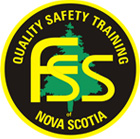Light Duty Program
Hazards Identified
Hazard-Specific Personal Protective Equipment
Hazard-Specific Training
Safe Work Practice
________________ , Agrees to make every reasonable effort to provide suitable (Company Name) modified work to any employee whom is unable to perform his/her normal duties as a consequence of injury or illness.
The work must be productive and the result must have value.
Every case will be assessed on an individual basis with the support of the involved employee, Worker’s Compensation Board, Physician and Management.
Benefits:
EMPLOYEE:
Injured workers benefit because Light Duty Work Programs allow them to return to the workforce as quickly as possible thereby:
- Encouraging speedier rehabilitation.
- Helping them maintain contact with co-workers.
- Reducing the sense of estrangement.
- Reducing the time needed for the worker to return to full work capacity.
- Helping them maintain their identity and self-respect.
- Maintains job and employee benefits.
- Provides gradual re-adaptation to the physical demands of the workplace.
EMPLOYER:
Employers benefit because Light Duty Work Programs get skilled workers on the job as quickly as possible after an accident thereby:
- Maintaining high productivity levels through the use of already trained workers.
- Eliminating the non-recoverable costs of training new workers.
- Reducing the costs of hiring and training replacement workers.
- Reduce unnecessary lost time.
- Maintains goodwill and employee relations.
- Assist in meeting legal requirements.
Regulations, Standards and References
Occupational Safety General Regulations
Light Duty Work Program
- Light Duty Work Program is any job, task, function, or combination thereof that a worker who temporarily suffers from a diminished capacity may perform safety without risk of re-injury or exacerbation or disability or risk to others.
- The object of this program is to restore workers who have had injury of illness, through progressive re-integration, into, his/her regular job wherever possible.
- If it is apparent the worker cannot do his regular job, management will look for ways of modifying the regular job so it will comply with the worker’s limitation.
- If it is not possible to modify the regular job management will consider alternate jobs.
- The work must be productive and the result of the work must have value.
- Every case will be assessed on an individual basis with the support of the involved employee, Worker’s Compensation Board, physician and management.
- Modified work should be acceptable to all parties.
- It will not extend beyond four weeks except in exceptional cases when extensions may be grandted on an individual basis.
- Modified work will be available on all shifts.
- If modified work is not practical, the worker remains off on leave.
Modified work may include:
- Working fewer hours
- Taking more frequent rest breaks
- Obtaining assistance from a co-worker for more difficult tasks
- Job/responsibility sharing
- Physical changes to the work environment
- Assisting devices
- Assignment to another job
- Special project work
- In the case of permanent impairment, management will meet with the worker to consider what additional measures are necessary for placement of that employee.
Follow up Procedure
If the physician identifies on the restriction from that a follow up is required, the following procedure should be followed.
- The supervisor will identify the assessment date and will provide the employee with another restriction form to be taken to the attending physician. They will advise the employee to return the completed form following the assessment.
- When the employee returns with the completed restrictions form the supervisor will review the form with the employee and identify the modified work that is available to his/her restrictions.
- The employee may accept or reject the modified work.
Procedures for employees absent from work on WCB, STD, LTD.
- All employees absent from work must keep in touch with their supervisor at least once per week.
- Restriction forms must be filled out by the doctor on each visit and returned to the office.
- It is expected that anyone who is disabled with be seeing their doctor every week or at least every tow weeks. Where appropriate, contact frequency will be determined by the company.
- When necessary management will clarify modified work details with the doctor.
- The Light Duty Program will be a joint effort between management and employee.
- If it is not possible to accommodate an employee’s restrictions the employee will remain on leave.
- If the employee’s condition deteriorates while on modified duties, the treating physician will reassess the employee as soon as possible.
- Follow up involves assessing the employee’s ability to perform the modified duties safely and will continue until; the employee has returned to full duties.
